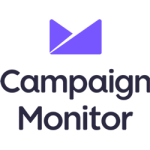Connect MailChimp to Campaign Monitor


About MailChimp
Integrate.io’s native Mailchimp ETL connectors let you move data from Mailchimp on your terms. These connectors require little code, removing the need for complex big data pipelines, complicated coding, and data engineering experience. Integrate.io is the data platform for Ecommerce companies like yours that want to get more value from Mailchimp. Schedule an intro call to learn more.
About Campaign Monitor
With its suite of powerful, easy-to-use tools for branded email campaigns, Campaign Monitor includes a library of professionally-designed email templates and tools to create and deploy custom-tailored drip email marketing campaigns and abandoned cart messages. The platform also features tools to obtain better customer feedback, product reviews, and more.
Popular Use Cases
Bring all your MailChimp data to Amazon Redshift
Load your MailChimp data to Google BigQuery
ETL all your MailChimp data to Snowflake
Move your MailChimp data to MySQL
Bring all your Campaign Monitor data to Amazon Redshift
Load your Campaign Monitor data to Google BigQuery
ETL all your Campaign Monitor data to Snowflake
Move your Campaign Monitor data to MySQL
MailChimp's End Points
Table of Contents:
- Connect your Mailchimp data for one single source of truth
- ETL your Mailchimp account data to a target destination in minutes
- Integrate.io has the Mailchimp data integrations you need
- How Integrate.io customers power growth with Mailchimp data connectors
- Get started analyzing your Mailchimp data in minutes
- Why choose Integrate.io for your Mailchimp data integration?
- Get started on your Mailchimp data integration today.
- Explore our Mailchimp ETL resources
Connect your Mailchimp data for one single source of truth
- Analyze Mailchimp data sets with other data sources for a 360-degree view of your email marketing campaigns.
- View patterns, trends, and anomalies in Mailchimp data and make smarter decisions about Ecommerce processes.
- Generate more advanced insights about Mailchimp data than you can find on Mailchimp itself. Track campaign insights and make your email marketing workflows more effective.
ETL your Mailchimp account data to a target destination in minutes
- Integrate.io lets you ETL Mailchimp data to destinations such as Snowflake, Amazon S3, and Amazon Redshift. You can then run data through business intelligence (BI) tools and generate insights about your email marketing campaigns.
- Integrate.io extracts data from Mailchimp, loads it to a target system, and then transforms data into the correct format for data analysis.
- Integrate.io can also perform super-fast Change Data Capture (CDC) alongside ETL, allowing you to synchronize data between systems.
- It's not just ETL. You can also ELT Mailchimp data to a central repository without any of the hard work.
Integrate.io has the Mailchimp data integrations you need
Examples of Mailchimp ETL destinations:
- Integrate Mailchimp data with Amazon Redshift
- Transfer data from Mailchimp to Amazon S3
- Load Mailchimp data to Snowflake
- Plus more!
Other Mailchimp integrations:
- Combine Mailchimp data with Salesforce data and benefit from this data integration when creating sign-up forms, opt-in policies, email templates, email notifications, and custom fields. Engage with more prospects and customers on your Mailchimp lists!
- Combine Mailchimp data with Shopify data and improve landing pages, attract more subscribers, engage with new customers, and prevent leads from unsubscribing from your email lists.
- Combine Mailchimp data with Recurly data and combine email marketing with subscription management.
View all integrations.
Integrate.io is the data warehousing integration platform with deep Ecommerce capability that helps data-driven companies ETL data from Mailchimp. This easy-to-use platform comes with a drag-and-drop point-and-click interface that simplifies data integration, resulting in more effective Ecommerce outcomes. Schedule an intro call to learn how integrating Mailchimp data will benefit your enterprise.
How Integrate.io customers power growth with Mailchimp data connectors
- Track replies to email campaigns based on filters such as unread messages and reply dates. This helps you track customer responses to marketing messages and learn more about the people engaging with your emails.
- Monitor analytical data about Mailchimp campaigns. Learn which emails resonate the most with recipients, which messages generate the most conversions and replies, and how long it takes Mailchimp subscribers to click on links within messages. Tracking this information helps you determine whether your current campaigns provide a return on investment.
- Measure overall email campaign effectiveness in your Ecommerce organization and finetune future campaigns based on the latest analytical data.
- Create Mailchimp lists that contain people genuinely interested in receiving your marketing messages. You can then target these prospects and turn them into real customers.
- Automate emails with time- and activity-based triggers. That helps you move prospects through your sales and marketing funnels.
- View Mailchimp data on powerful Ecommerce dashboards and identify patterns and trends in that data.
Get started analyzing your Mailchimp data in minutes
If you prefer, you can code data pipelines on Integrate.io for more advanced data integration using the platform’s webhooks and API features.
Why choose Integrate.io for your Mailchimp data integration?
Most Integrate.io customers use the platform’s no-code/low-code data connectors to ETL data between a source and a destination. That removes the need for manual big data pipeline-building.
Deep Ecommerce Capability
Integrate.io is a data warehousing solution built exclusively for Ecommerce. You’ll find ELT/ETL connectors for many of the Ecommerce platforms you currently use.
Enhance Data Governance
Integrate.io's data connectors adhere to data governance frameworks like GDPR and CCPA. That prevents you from receiving expensive fines for data non-compliance.
Streamlined Pricing
Integrate.io's simple pricing model makes it affordable to move data from Mailchimp.
Exceptional Customer Service
You can contact Integrate.io by phone, email, or live chat and access documentation and tutorials.
Get started on your Mailchimp data integration today.
14-day ETL trial. No credit card is required.
Explore our Mailchimp ETL resources
- 10 Customer Success Tools That Work Well for Ecommerce Businesses
- The Ultimate Guide to Choosing the Best Marketing Automation Software
- How to Get Started With an E-Commerce Integration Platform
- 10 Best Ecommerce Data Integrations for Your Online Store
- What's an E-Commerce Dashboard? & Why Does it Matter?
Campaign Monitor's End Points
Campaign Monitor Email Templates
Campaign Monitor Data Import Compatibilities
Campaign Monitor Data Segmentation
Campaign Monitor Subscriber Journeys
Campaign Monitor Email Marketing Automation
Campaign Monitor Analytics and Statistics
Integrate MailChimp With Campaign Monitor Today
The no-code pipeline platform for
your entire data journey
TRY IT FREE FOR 14-DAYS

Integrates With
Get Started On Your
Data Integration Today
Powers your company decision making
and operational systems with our one-stop
ETL and data integration platforms
TRY IT FREE FOR 14-DAYS










